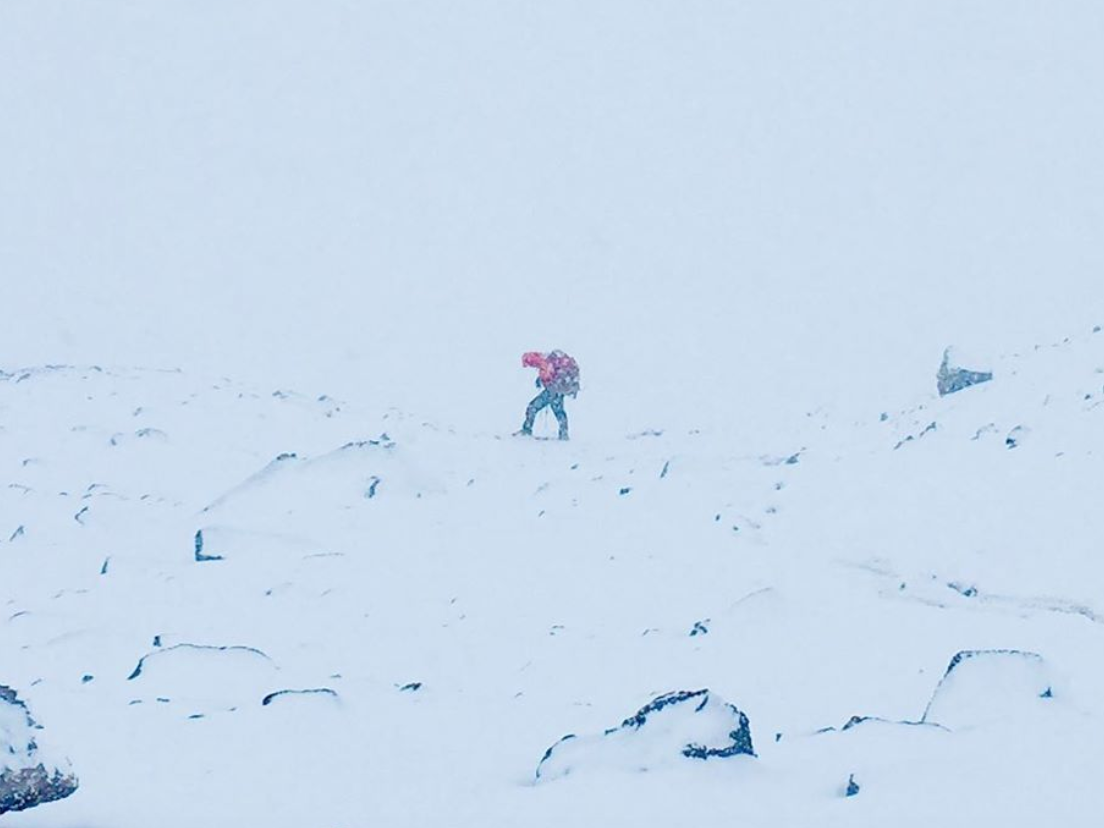Climbing Mount Sidley, Antarctica’s tallest and most remote volcano
Daniel Bull, the youngest person in history to conquer the Seven Summits and Seven Volcanic Summits, speaks to Tom Kershaw about his final ascent before clinching the world record


Daniel Bull sat at the summit of Mount Sidley, lost in an infinitely white world of ice and snow, and looked out over the edge the Earth. The highest volcano on the Antarctic continent, and the most remote on the planet, the 36-year-old had become the youngest person in history to scale the Seven Summits and Seven Volcanic Summits – the highest peaks on each continent – entailing a decade-long journey of unimaginable perseverance and obsession, treading the invisible crevasse between life and death.
To reach Antarctica alone, Bull first had to fly from Sydney to the southernmost tip of Chile, where he boarded an ex-Soviet cargo plane headed for Union Glacier Camp – the only occupied campsite in Antarctica. A trip requiring years of planning and thousands of pounds in tickets and permits, from there another four-hour flight across the peninsula carried him to the base of the volcano, attempting multiple landings on a thin sheet of ice.
Unlike Vinson, the tallest mountain on the continent, Sidley is rarely ever climbed. It was discovered by an American naval officer, Rear Admiral Richard E. Byrd, in 1934, but it wasn’t until 56 years later that an explorer first reached the summit. To clinch the world record, Bull was attempting to become just the 33rd person in history to scale the 4,285m (14,060ft) volcano.
There is no set route or established camp up Sidley. Nobody had scaled it in years prior to Bull’s attempt and the ascent is simply a matter of intuition and guesswork, navigating a maze of crevasses up a long, pummeling slope. Behind him, Bull dragged a 40kg sled of equipment, carrying all his essentials such as tents, technical equipment and supplies, that acted like a trailing anchor, forever pulling him back towards the base of the mountain. Eventually, along with three climbing partners, he managed to find a small patch of snow suitable to make camp. They charged their satellite phones on solar panels, rehydrated tins of food, and tried to grab any vital minutes of sleep in the oxygen-depleted air.
But, just as they prepared to push on in the early hours of the morning, a violent storm swept the volcano, blanketing it in a thick layer of powder. A nervous wait stretched into days before the all-clear signal was received from Union Glacier Camp to continue.

Bull was a mixture of ecstasy and relief, adrenaline and agony. But, shortly into the climb, a member of the troupe was stricken by sickness and rapidly began to lose strength and stumble, leaving them with no option but to turn back.
“It was brutal,” Bull tells The Independent. “The plane had disappeared from view, the snow was solid blue ice, like an ice-hockey rink titled at a vertical angle. After six hours of climbing up this relentless slope, my back was in agony, my heart was pounding, my lungs felt like they were about to burst.
“It’s easier to accept turning back because of the weather. When we started the descent, I assumed that that was it. That breaking the record, being the first Aussie to climb Sidley, thousands of dollars, preparation and family sacrifices had all gone. Ordinarily, you’d retrace your footprints but they’d all been masked by the slow. There was no horizon, the sky and ground merged into one, and no one spoke. When we got back, we were so deflated, we didn’t know if we’d get another shot.”
The following morning, now just three, they restarted their ascent from the very beginning, their energy reserves spent and backs screeching in pain. They agreed to move quickly, determined to minimise any further risks, taking no more than a 60-second break every hour. “I was swinging my arms just to force the blood back into my fingers,” Bull says. “But, finally, we saw these huge mushrooms of snow that distinguish the crater.”
For a moment, they couldn’t resist starting down into the 1,200m abyss, huddled on a small ridge that crumbled sharply towards eternal nothingness on either side. “The wind was ridiculously strong, the visibility wasn’t great, it was too cold to speak or even plant a flag,” he says. Instead, Bull simply marked the spot on his GPS device. A world record celebrated by a single frostbitten push of a button.
On the way down, the rope linking Bull to his two climbing partners suddenly went taught. One member of the team had fallen into a shallow crevasse and only by frantically smashing his ice axe into the slope did Bull prevent himself being dragged in too. “Eventually, he was able to pull himself back out,” he says. “Luckily it wasn’t too deep, but from there on we were so cautious as we crossed this minefield of crevasses.”
Like a distant spec on the horizon, finally, their aircraft came back into focus. As they took those last few steps, the smell of burning meat and mulled wine began to waft through the air. Beneath the plane, their two Canadian pilots had started a barbecue. “Only then, once we were safe, did the emotions start to hit. Not just fulfilling a dream or a record, but something I’d saved and waited for for so long.”
Bull pulled out his satellite phone and composed a text message to his father. “Hopefully leaving west Antarctica soon. Looking forward to seeing you back home.”
Join our commenting forum
Join thought-provoking conversations, follow other Independent readers and see their replies
Comments